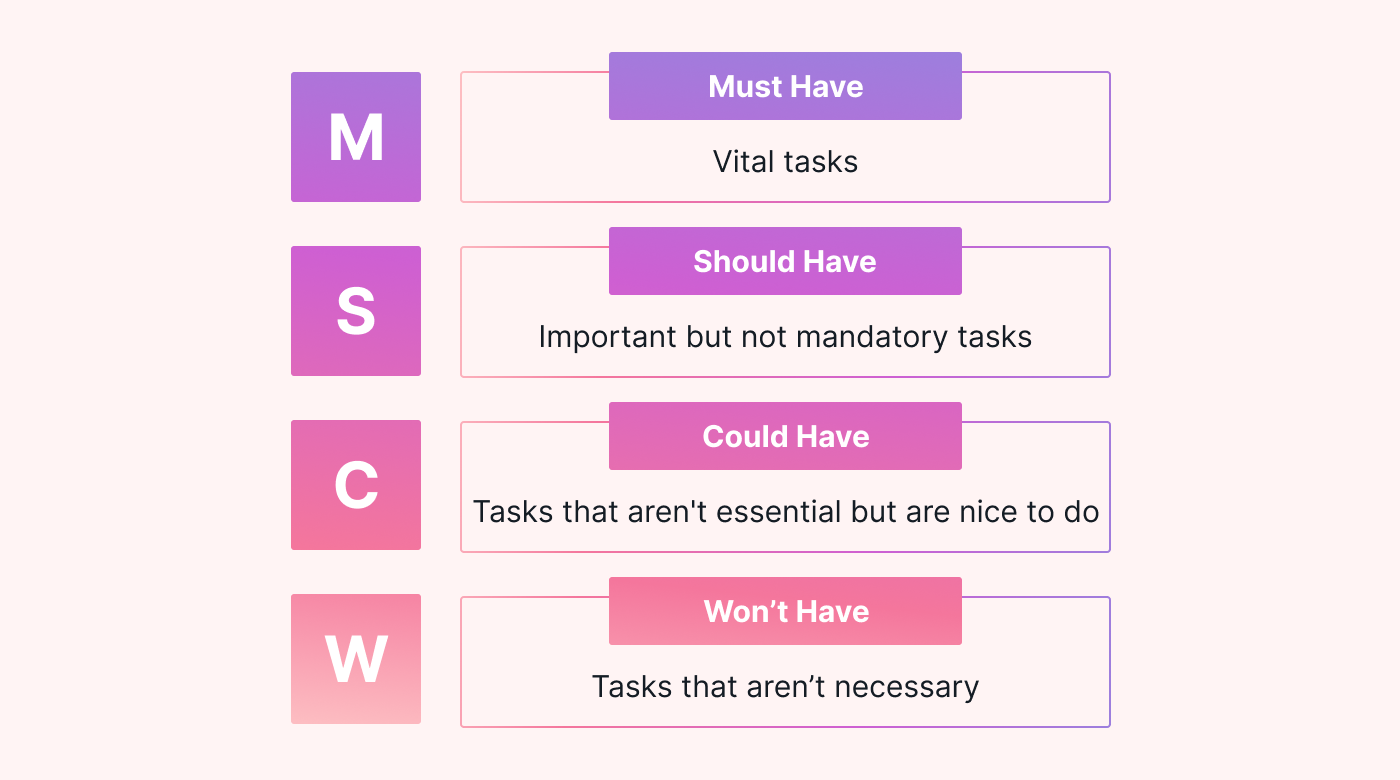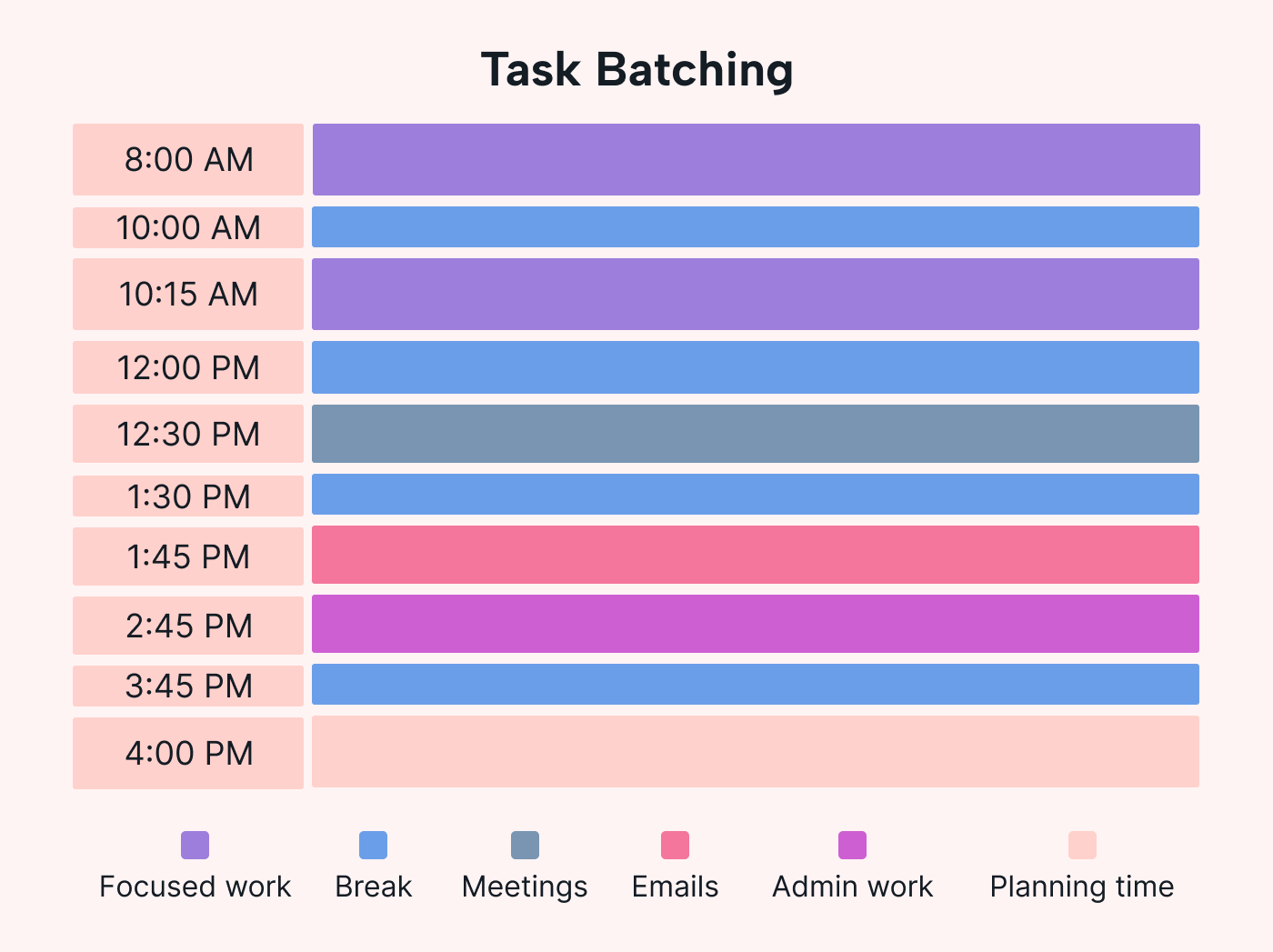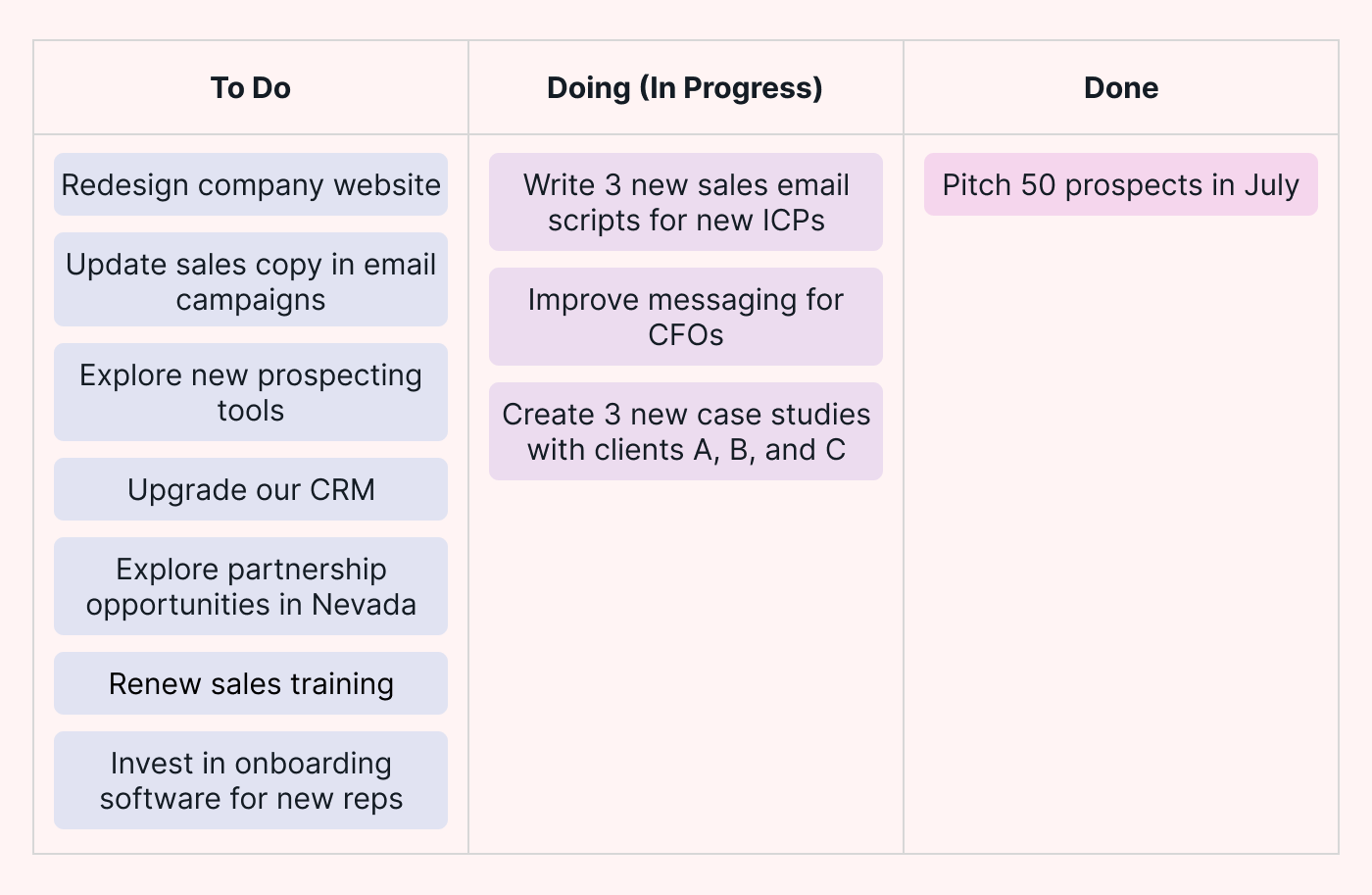Feeling swamped by a tidal wave of tasks at the office? We’ve all been there.
Learning how to get organized at work when overwhelmed can be a daunting endeavor, but once you find a system that works for you, you’ll never feel like you’re drowning again.
Read on to learn how to organize your work-life like a pro. From adopting digital tools to keep your tasks in check to carving out time for mindful breaks, we’ve got you covered.
Are you ready to transform your work and leave that struggle behind?
Tips for getting organized at work
Here are 11 techniques to help you say goodbye to the stress of overwhelm at work:
1. Take a moment to breathe
When you’re feeling overwhelmed, it’s important to take a moment to breathe and acknowledge your thoughts. A helpful method for regrounding is the STOP technique, which uses the following steps:
S: Stop whatever you’re doing.
T: Take a breath.
O: Observe what’s going on.
P: Proceed to the next step.
Another grounding exercise is tactical breathing. Inhale through your nose for a count of four. Hold it for another four, and then exhale for four. Repeat this process for as long as you need.
These moments of mindful breathing can reset your thoughts and help you approach your tasks with a clear head.
2. Write everything down
Now, it’s time to unload your mental baggage.
Begin by jotting down all the current tasks, responsibilities, and commitments on your plate. Remember, this is a brain dump, so don’t worry about sorting out your to-do list just yet. We’ll take care of that in the next step.
Whether you prefer a pen and paper, sticky notes, bullet journals, or digital apps, pick your method and start writing. And if writing isn’t your thing, you can use voice recording apps.
Systems like the ALPEN method or Getting Things Done (GTD) often kick off with this liberating step because it’s so effective. So, let your thoughts flow and lighten that mental load.
3. Prioritize your tasks
Once you have a list of tasks, it’s time to prioritize them.
One effective tool is a priority matrix. The Eisenhower Matrix, for instance, divides your daily tasks into the following four categories, laid out as quadrants:
- Urgent and important
- Not urgent but important
- Urgent but not important
- Neither urgent nor important
Place each task into the relevant quadrant to easily see and address it when needed.
Another great approach is the MoSCoW method, which categorizes tasks in the following way:
Must have: Tasks that need immediate action
Should have: Important but not urgent tasks
Could have: Beneficial but optional tasks
Won’t have: Tasks you can delay or skip
For more insights, check out our guide called “How to Prioritize Tasks: Finding the Right Methodology.”
 |
4. Break down big tasks
If a task is too big for you to handle, break it down into small, simple steps. This will make it less intimidating and easier to tackle.
If you don’t know where to start or find that breaking down tasks is overwhelming, there’s a game-changing tool that uses automation to do it for you. Give Goblin Tools a try and watch the stress disappear.
5. Set realistic deadlines
Setting a deadline is more than just marking a date on the calendar — it’s about meeting your overarching goals. So, when assigning deadlines, even self-imposed ones, make sure they’re realistic for you. For instance, if you know a task will take three days to complete, don’t try to squeeze it into one.
Here’s how to set grounded deadlines:
Consider the task’s achievability: Can you comfortably complete the task within a set period of time?
Recognize your own resources and skills: Verify you have what it takes to get the job done.
Anticipate hurdles: Life is unpredictable. If you depend on others, like suppliers, account for potential setbacks like delivery delays.
Setting realistic deadlines can reduce your stress and boost your chances of experiencing consistent wins.
6. Batch similar tasks
Group similar tasks together and tackle them in one go. This reduces the cognitive load of switching between different types of activities and, as a result, can make you more efficient.
For instance, consider grouping emails and phone calls together since they’re both about communication. Alternatively, you can match tasks to your energy, tackling concentration-heavy ones when you’re most alert.
There are also “themed” work days you can implement. For instance, use Mondays for admin, Tuesdays for content, Wednesdays for bookkeeping, and so on. This is a neat way to structure your week.
If that’s not your style, try using business coach Dan Sullivan’s Free, Focus, and Buffer system. Take free days to relax and rejuvenate. Dedicate focus days to high-priority tasks. And use buffer days for lighter tasks, like planning and admin.
 |
Whichever method you choose, batching tasks helps to combat overwhelming feelings and boosts your productivity.
7. Set boundaries
Got a jam-packed day? It’s alright to hit pause and say “no” sometimes. Lean on your teammates, delegate, and know your own boundaries.
Chat openly with your coworkers and bosses about what you can handle. If you don’t, burnout can quickly result. In fact, 56% of burnt-out employees say their overwhelming workload is the culprit of their stress.
So, draw the line and look after yourself. It’s that simple.
8. Use technology to get organized
Productivity tools and apps can be a game-changer for staying organized.
Struggling to plan your days the old-fashioned way? Now you don’t have to. Motion takes everything you need to do and uses AI to automatically create the perfect schedule for you.
Sick of back-to-back meetings? Motion sets aside some focus time in your day so it’s not just filled with meetings. And the cherry on top? Motion’s Zapier integrations make syncing tasks across platforms a breeze.
Using the right productivity tools means you might just find yourself getting 25% more done without feeling overwhelmed.
9. Schedule regular breaks
Working non-stop isn’t productive; our brains need breathers, just like our bodies. So, remember to pencil in short breaks throughout your day to refresh your mind.
One popular method of doing this is the Pomodoro Technique, where you work for 25-minute segments with two to five-minute breaks in between.
Another method is the 52/17 rule, where you focus on a task for 52 minutes and then rest for 17 minutes.
These mini-recesses can work wonders for your productivity and mental clarity.
10. Learn how to manage multiple projects
Juggling several projects at once? Consider using visual tools, like Kanban boards or Gantt charts, to map out your projects’ progress.
 |
Remember that jumping from one tool to another often leads to chaos. So, keep things simple instead by gathering all your project details in one reliable hub, such as Motion.
Motion is a project management tool that bundles projects, tasks, notes, chats, and even calendars on one platform. How convenient is that?
Lastly, always be a step ahead. Identifying potential hiccups early on can help you avoid full-blown problems altogether.
11. Reflect and adjust
As each week draws to a close, take a moment to review your accomplishments and challenges. Did your action steps work, or is there room for improvement? Tweak your game plan if you need to.
And remember, you don’t have to stick to one organizational method. Finding what works best for you is all about testing and adjusting until it feels right.
Take Zoe Read-Bivins, for example. When the Pomodoro Technique didn’t click for her, she created the Flowtime Technique (a.k.a. Flowmodoro) to get in the flow.
So, keep experimenting and adjusting. Your ideal workflow is out there, waiting to be discovered.
Bonus tip: How to get organized at work when you have ADHD
Navigating work (and daily life) with ADHD is like being on a rollercoaster with extra loops. But don’t worry; there are ways to make the ride smoother.
First, people with ADHD often benefit from a routine. So, establish a consistent morning routine, and then schedule breaks, meetings, and individual tasks for structure.
Distracted easily? Try time blocking. This technique limits the temptation to multitask.
Visual reminders can also be effective for an ADHD mind. Use sticky notes, whiteboards, or visual task management tools to keep track of individual tasks and priorities.
And finally, don’t stay glued to your chair all day! Stretch, pace while you’re on a call, or try standing while you work. Moving around can help keep those ADHD symptoms in check.
Ditch the stress and breathe easy with Motion
You now know some techniques for getting organized at work when overwhelmed.
Start by jotting everything down and prioritizing. And if something feels too big to tackle, break it down into small, simple tasks. Also, always remember to set deadlines you can actually meet.
Our secret weapon is Motion. Think of it as that super-organized buddy who’s always got your back. It’ll warn you if a deadline seems tight so that you never take on more than you can handle.
And the best part? If something wild pops up (because, let’s face it, stuff happens), Motion reshuffles your task list without you having to lift a finger. No fuss, no hassle.
So, ready for a smoother ride at work? Start your 7-day free trial with Motion and watch the stress melt away!





